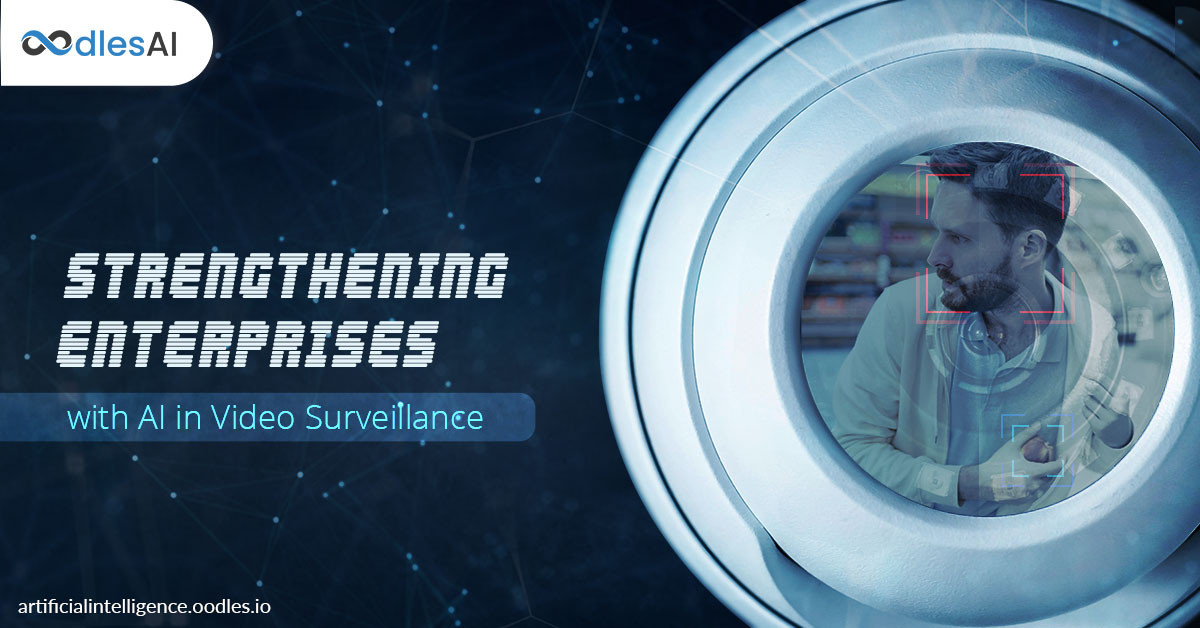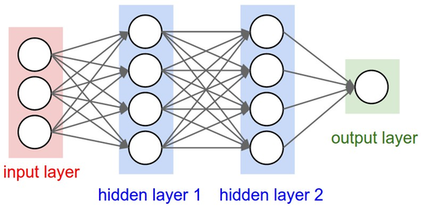Strengthening Enterprises with AI in Video Surveillance
Sanam Malhotra | 3rd October 2019

Video surveillance is a traditional security measure used to prevent theft, vandalism, and illicit trespassing. The introduction of artificial intelligence (AI) in video surveillance, aka AI surveillance, is expanding business opportunities beyond security. The combination of AI development services and surveillance empowers cameras to recognize people, objects, and conditions with agility and precision. Today, global industries including retail, healthcare, and automobile are using AI surveillance to extract better customer insights and accelerate growth.
This blog post explores different use cases of AI surveillance for enterprises and mainstream industries worldwide.
Understanding AI Surveillance and its Significance for Businesses
The traditional method of manually surveilling video feeds requires long hours of undivided human attention. However, our limited span of attention combined with fatigue and distractions leads to fragmented vigilance and omission of critical details.
With artificial intelligence development, it is possible to automate video surveillance systems for accurate and real-time monitoring of visual content. AI in video surveillance applications in businesses encompasses security, worker monitoring, equipment maintenance, resource and operation management.
The following reasons make AI surveillance an essential video analytics tool for global businesses-
a) The use of well-trained deep learning algorithms makes AI surveillance a smarter and more effective video surveillance alternative than humans.
b) The three layers of neural networks underlying the deep learning algorithms enable precise image classification with accurate feature and object recognition.
c) The latest artificial intelligence advancements enable businesses to search for specific objects or people wearing specific clothes in video feeds instantly. Such efficient capabilities expand the application of AI surveillance from security to model optimization to predictive maintenance.
Related- Improving Business Operations | 5 Applications of Facial Recognition Technology
AI Surveillance for the Retail Industry
The retail and eCommerce industries have experienced significant demand and growth over the past few years. Accurate customer insights guide retail businesses to optimize product placement that improves store efficiency and accelerate conversions.
Contradictory to manual surveillance methods, AI-powered IoT surveillance devices and cameras use layers of data feeds to train machine algorithms. It ensures real-time monitoring of customer behavior, detection of shoplifters, understanding customer demographics, and much more. MGI studies reveal that IoT applications can lead retailers to capture economic value between $410 billion and $1.2 trillion annually by 2025.
Below are some effective applications of AI Surveillance in the retail sector-
a) Tracking Demographics
The combination of computer vision capabilities and deep learning algorithms enable AI-powered surveillance cameras to track the age and gender of store visitors. Retailers can use this data to assess diverse customer demographics and behavior. They can use these customer insights to formulate business strategies including in-store promotions, better shop-floor layout, staff allocation, etc.
b) Protecting Customers and Resources
Also, A.I. surveillance now stands as a tested security measure in stores to prevent shop-lifters and detect loitering. It also enables businesses to assist queue management, detect shortages in stock, and prevent mishaps in a timely manner.
How does Oodles AI assist retailers with AI surveillance?
We, at Oodles, build AI-powered applications with Computer Vision capabilities that enable real-time object detection, facial, gesture, and optical character recognition. Our OpenCV and TensorFlow development services improve retail operations with the following benefits-
a) Our development team has experiential knowledge in image-processing to train the neural network of our AI-powered surveillance systems. It leads to accurate and real-time recognition of people, objects, and situations with varied angles and resolutions.
b) We have achieved over 80% accuracy in detecting image differences, anomalies, and in-store thefts with our TensorFlow deep learning capabilities. It has enabled our clients worldwide to increase their store efficiency and accelerate conversions.
AI Surveillance for the Healthcare Industry
Mass adoption of cloud-based services and applications has made healthcare data prone to misuse and ‘hacktivism’. Therefore, pharmaceutical leaders should invest in AI security systems that use electronic health records (EHR) to draw meaningful medical insights
AI surveillance provides the following benefits to the healthcare industry-
a) Channelizing Medical Data
According to Stanford University, since the digitalization of the healthcare industry, medical data has grown at a consistent rate of 48% every year. Artificial intelligence development channelizes this data to strengthen medical cybersecurity, analyze demographic health issues, antibiotic consumption, infection metrics, and more.
b) Monitoring of Public Health
Also, AI-powered surveillance tracks real-time patient movements to facilitate condition-based maintenance, staff allocation, and proper medicinal services.
Oodles Artificial Intelligence surveillance services for the healthcare industry
At Oodles, we solve industry-specific challenges of the healthcare sector by embedding AI-surveillance systems with granular-level Natural Language Processing solutions.
Here’s how our NLP services contribute to AI-powered medical video analytics-
a) Our NLP services are effective at replacing time-taking manual methods to suspect adverse drug reactions (ADR) from databases and medical reports. Our deep neural network capabilities can save up to a million serious injuries and deaths due to unreported or ill-reported ADRs.
b) We harness EHR data with our predictive analytics services to enable AI in video surveillance systems to stratify risk, predict and prevent diseases.
Talk to our AI development team to know more about our AI surveillance services and use cases.




